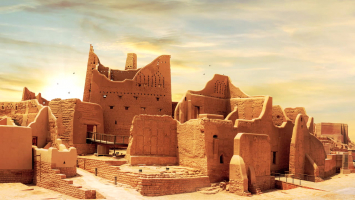Top 4 Most Beautiful Historical Sites in Vatican City
The Vatican has been an autonomous state since 1929 when the Pope signed an agreement with Mussolini, and it is the world's smallest with only 0.44 square ... read more...kilometers. However, there are enough sites and things to do within its borders to keep travelers occupied for many days, so prioritizing your itinerary is critical. Especially Vatican City is such a famous tourist destination for both general sightseeing and religious pilgrimages, lineups to view the most beautiful historical sites in Vatican City.
-
Let's start with one of the most beautiful historical sites in Vatican City, St. Peter's Basilica was constructed between 1506 and 1626 on the site of an emperor Constantine the Great's cathedral (324). According to legend, Peter's burial was located in this church. Bramante, Raphael, Antonio del Sangallo, Michelangelo, and Carlo Maderno were among the designers who worked on St. Peter's Basilica since it took so long to complete. Gian Lorenzo Bernini is responsible for many of the Basilica's embellishments.
Besides, St. Peter's Basilica is one of Christendom's holiest temples and one of the world's largest cathedrals. Furthermore, it is here that the Pope presides over several liturgies throughout the year. The Basilica's proportions – 136 meters high and 186 meters broad – are one of its most striking features. Michelangelo's Pietà, Bernini's baldachin over the main altar, the statue of St. Longinus in the crossing, Urban VIII's tomb, and the bronze cathedra of St. Peter in the apse are just a few of the treasures of Renaissance and Baroque art that can be found inside St. Peter's.
Bernini also created the monument of Alexander VII Chigi (left nave). A golden person holding an hourglass depicts the passage of time and the inevitable death that all of us will face. The crypts containing the 148 popes' tombs (catacombs) can also be visited via a different entrance. Additionally, you have the option of climbing the dome. After climbing 550 steps, you'll be rewarded with a spectacular view of Rome and the Vatican. After going through security, proceed to the right side of the Basilica to find a ticket window. Tickets for the dome may be purchased here (8 euros). You may either walk all of the stairs or pay an additional 2 euros to use a lift part of the way. The Pope's 'Urbi et Orbi' addresses at Easter and Christmas have made the huge piazza at the Vatican famous. The Pope holds a liturgy here every Wednesday, weather permitting, and if he is in Rome.
Address: Piazza San Pietro, 00120 Città del Vaticano, Vatican City
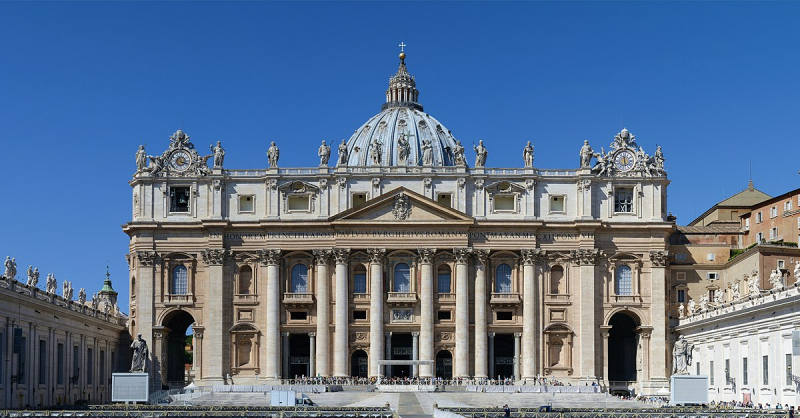
www.tripadvisor.com.vn 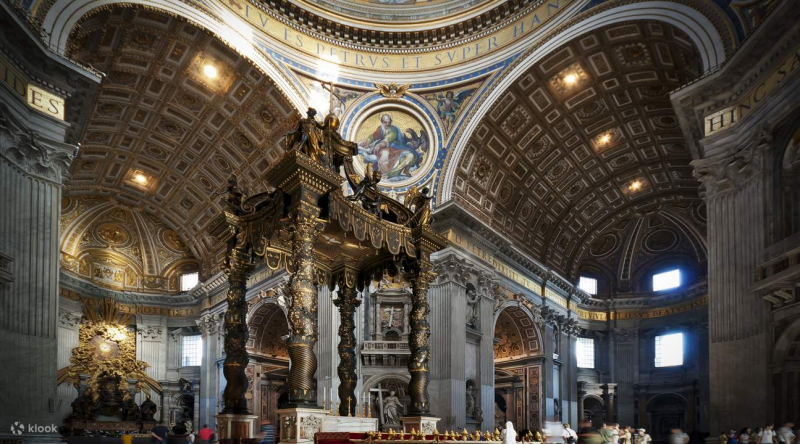
Romesite.com -
St Peter's Square, also known as Piazza San Pietro, is one of the most renowned and beautiful squares in the world, set in front of St. Peter’s Basilica is a gorgeous piazza. It was built in the seventeenth century by Bernini and can accommodate approximately 300,000 people. St. Peter's Square is one of the world's most famous and picturesque squares. It is situated at the foot of St. Peter's Basilica in Vatican City. Bernini designed and built the square between 1656 and 1667, with Pope Alexander XII's blessing. Other than being one of the most beautiful historical sites in Vatican City, the piazza is an architectural marvel with much to appreciate.
A huge colonnade that extends from the church and unfolds into a broad, curving form that surrounds the main piazza frames the plaza. Aside from its grandeur, the square's most notable feature is the colonnade of four rows of 284 columns and 88 pilasters that surround it. Above the columns are 140 sculptures of saints sculpted by Bernini's students in 1670. The square's proportions are impressive: 320 meters long and 240 meters broad. More than 300,000 people have gathered in St. Peter's Square for liturgies and other notable activities. The obelisk and two fountains, one by Bernini (1675) and the other by Maderno (1614), stand out in the square's center. The obelisk, which stands 25 meters tall, was transported from Egypt to Rome in 1586.
This open space, which is a local icon, hosts a variety of religious and cultural events throughout the year, including the Papal Audience. Thousands of people visit St. Peter's Square each year to remember its history, attend events, or simply appreciate its beauty.
Address: Piazza San Pietro, 00120 Citta del Vaticano, Vatican City
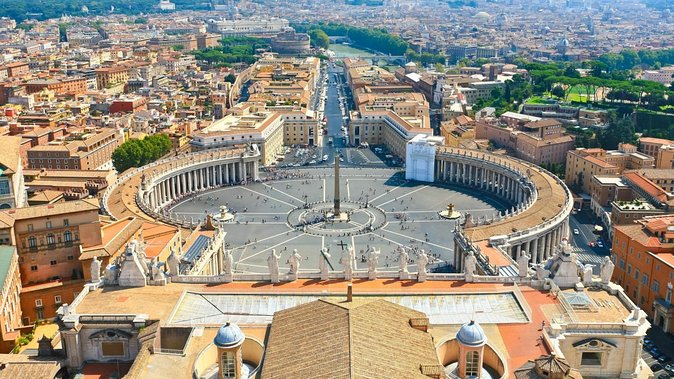
www.tripadvisor.com.vn 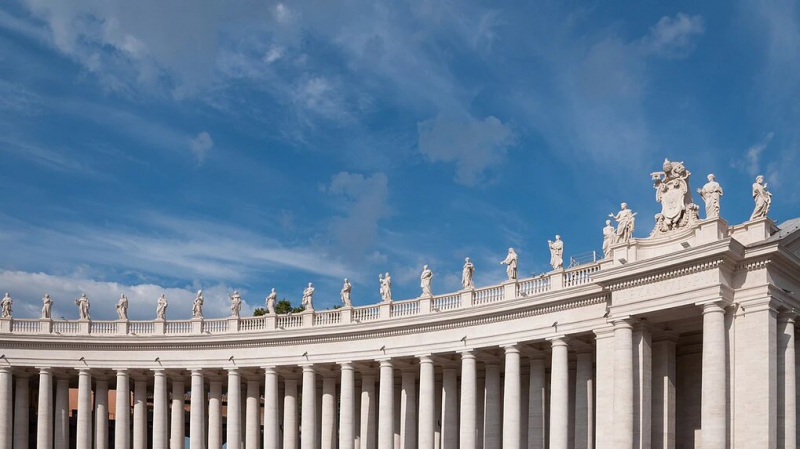
Romesite.com -
The Sistine Chapel is a papal chapel in the Vatican Palace that was built for Pope Sixtus IV in 1473–81 by the architect Giovanni dei Dolci (hence its name). It is known for Michelangelo's Renaissance frescoes.
The Sistine Chapel is a rectangular brick structure with a barrel-vaulted roof and six arched windows on each of the two major (or side) walls. The chapel's facade is plain and unadorned, but its inner walls and ceiling are covered in murals by a number of Florentine Renaissance artists.
The murals that fully cover the walls and ceiling of the Sistine Chapel are what attract visitors' attention, not the architecture. Michelangelo's murals on the ceiling and the west wall behind the altar are the most noteworthy artworks in the chapel. Pope Julius II commissioned the ceiling frescoes, generally known as the Sistine Ceiling, in 1508, and Michelangelo painted them between 1508 and 1512. They are based on Old Testament events and characters. Michelangelo created the Last Judgment fresco on the west wall for Pope Paul III between 1534 and 1541. These two massive frescoes are among the most important works of Western art.
The Sistine Chapel now serves as the conclave's meeting place. When a new Pope is elected, the cardinals convene in the Sistine Chapel to select their successor, surrounded by Michelangelo's magnificent artwork. Knowing what decisions were taken in the same place where you will be standing when you see the Sistine Chapel is a fascinating experience.
Located in: Vatican Museums
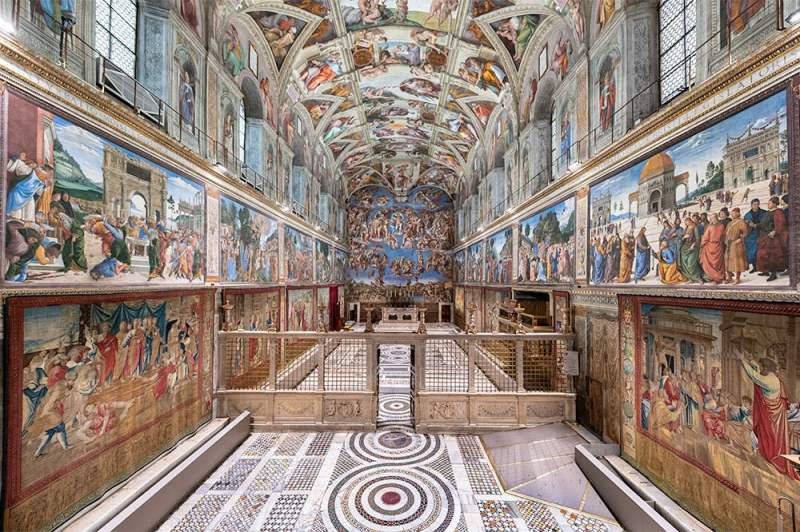
www.tripadvisor.com.vn 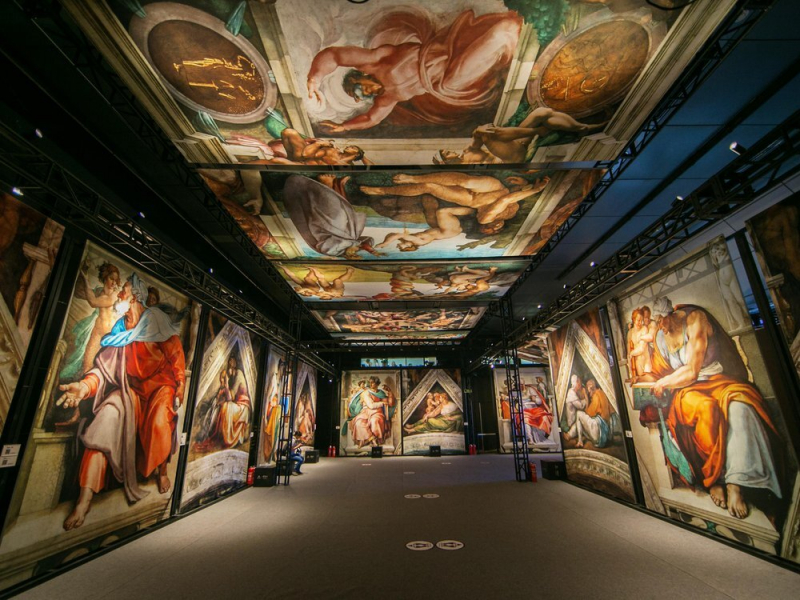
Romesite.com -
The sculptor's signature introduces Publio Cincio Savio to this second-century Roman sculpture that stands about four meters tall. It was originally used to embellish the middle of St. Peter's Basilica's old portico. It was put in the center of the exedra of Bramante's courtyard in 1608 and is now known as Cortile della Pigna. It is one of the Vatican's three Courtyards and provides tourists with the opportunity to take a break from viewing the museums.
The Vatican Museums at Rome's Cortile della Pigna. The Vatican bronze pinecone, also known as the Pinion, is a massive and ancient bronze sculpture that can be seen in one of the Vatican's courtyards, the Cortile della Pigna. It was discovered in the Middle Ages in the Baths of Agrippa, where it originated, until late in antiquity, and it can now be found for centuries at the Vatican Museums complex. La Pigna stands at the summit of a Michelangelo-designed double staircase. It features a capital base that represents the coronation of a successful athlete, a third-century work from Nero's baths, and is flanked by two bronze peacocks from Hadrian's time. The Cortile della Pigna is located in the Vatican Museums and is bordered on the north by the Palazzatto of Innocent VIII, on the south by the New Wing, on the east by the Chiaromonti Gallery, and on the west by the Apostolic Library galleries.
Continue going along the street in front of the artwork after examining the pine cone. In front of you will be a Pigna sculpture that is round but considerably more contemporary. It's one of the artist Arnaldo Pomodoro's round spheres. It's fascinating to consider the contrast between these two sculptures, both rounded but from different historical times. The artist presented the Pomodoro sphere to the museum in 1990, and it is most likely a personal version of the same museum. A diverse collection of works of art draws tourists from all around the world. On the other hand, the pieces on show are from various eras and each conveys a distinct tale. As a result, the museum's aesthetic mechanism is complicated and diversified. Arnaldo Pomodoro's sphere captures this perfectly. The two statues, therefore, reflect Italian art between old and new, ancient and modern, and both have been warmly received by the Vatican Museums volume up a content copy. The Vatican Museums at Rome's Cortile della Pigna bring many important architectures and attract many tourists around the world. It is no doubt on the list of the most beautiful historical sites in Vatican City.
Located in: Vatican Museums
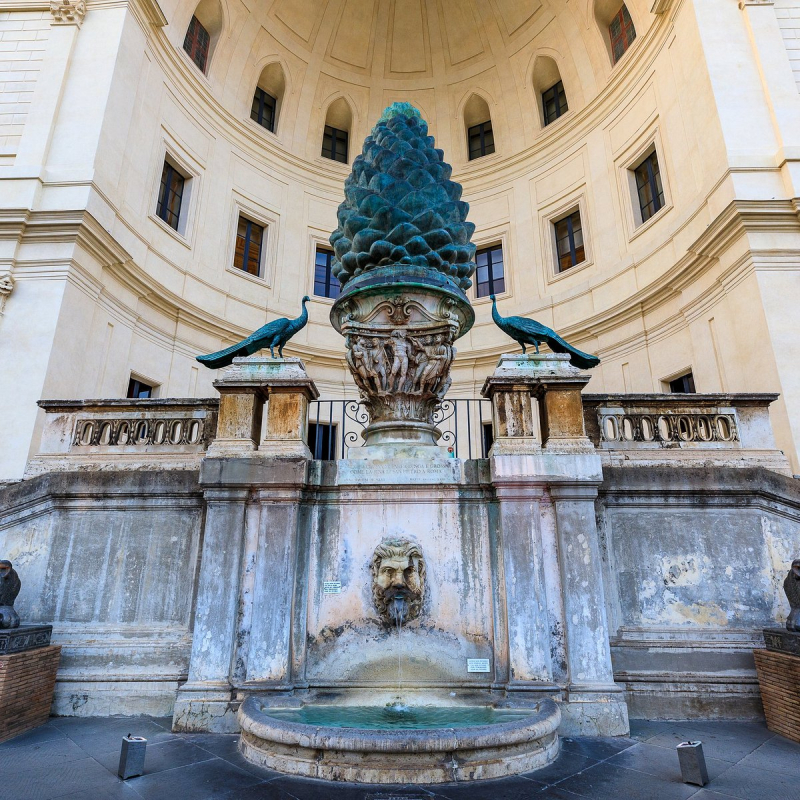
www.tripadvisor.com.vn 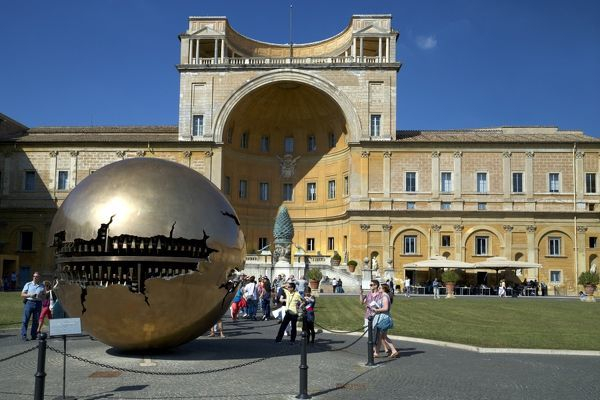
www.mediastorehouse.com
























